The Economics and Statistics Division maintains archives of previous publications for accountability purposes, but makes no updates to keep these documents current with the latest data revisions from Statistics Canada. As a result, information in older documents may not be accurate. Please exercise caution when referring to older documents. For the latest information and historical data, please contact the individual listed to the right.
<--- Return to Archive
For additional information relating to this article, please contact:
January 12, 2023DEATH COUNTS AND EXCESS MORTALITY, OCTOBER 2022 Statistics Canada has provided provisional information on deaths in Canada up to November 5, 2022. This includes deaths attributable to all causes; fluctuations from one week to the next may be attributable to many different causes of death. The data does not include all deaths that occurred during the reference period. Most provinces have not reported their results up to November 5; only Alberta and British Columbia have reported to this date. Information is not complete for recent months in:
Newfoundland and Labrador (to October 29, 2022)
Prince Edward Island (to December 25, 2021)
Nova Scotia (to August 20, 2022)
New Brunswick (to October 1, 2022)
Quebec (to October 1, 2022)
Ontario (to June 18, 2022)
Manitoba (to January 22, 2022)
Saskatchewan (to September 3, 2022)
With limited information from several provinces, national estimates are available up to August 27, 2022.
A comparison of deaths in recent years with the number of deaths reported in similar weeks in years prior to 2020 indicates whether mortality is higher than usually observed at that time of year. The number of deaths reported in each week is represented below as a ratio of deaths per 1 million residents (population as of July 1). Based on observed historical trends, Statistics Canada has also estimated the expected number of deaths for each week and compared this with observed deaths, adjusted where possible reflecting provisional data. Estimates of expected deaths are presented with a 95 per cent confidence interval.
Across Canada over the period from March 2020 to August 2022, there have been an estimated 53,741 excess deaths, 7.6% above what would have been expected. Statistics Canada has identified six periods of excess mortality in Canada since 2020: March-June 2020, September 2020-February 2021, May 2021, July-December 2021, January-February 2022 and April-May 2022. The last two periods of excess mortality coincide with the outbreaks of the Omicron variant of COVID-19 while previous periods of excess mortality coincide with prior variants. The third week of January 2022 had the highest excess mortality reported during the pandemic.
Data for Nova Scotia have been updated with several months of new data. These show that there were brief periods with somewhat elevated mortality in November 2021, February 2022, April 2022 and June 2022. However, after each of these episodes, mortality returned to expected levels.
There have been extended periods of excess mortality through much of 2022 in Alberta and British Columbia and more recently in Quebec. There have also been periods of excess mortality in Saskatchewan in the last year.
Statistics Canada has noted that mortality from both alcohol and drug use has risen considerably after the start of the pandemic. Deaths associated with accidental poisoning are concentrated among those under 45 years of age.
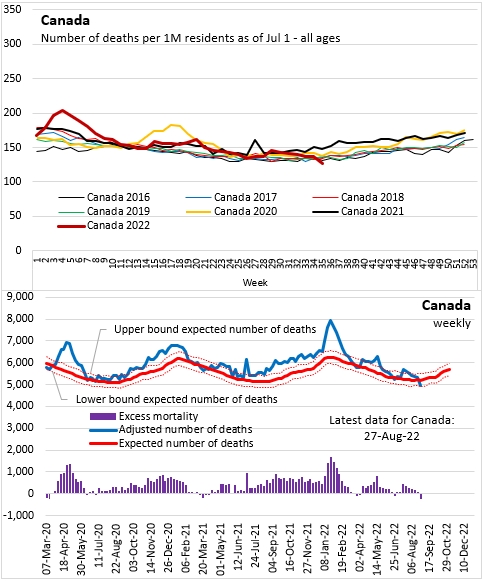
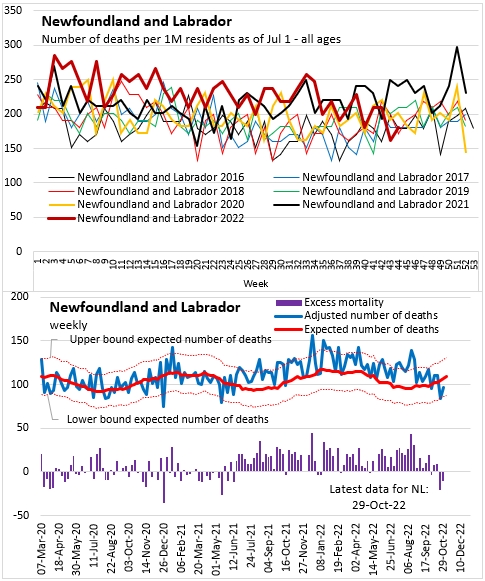
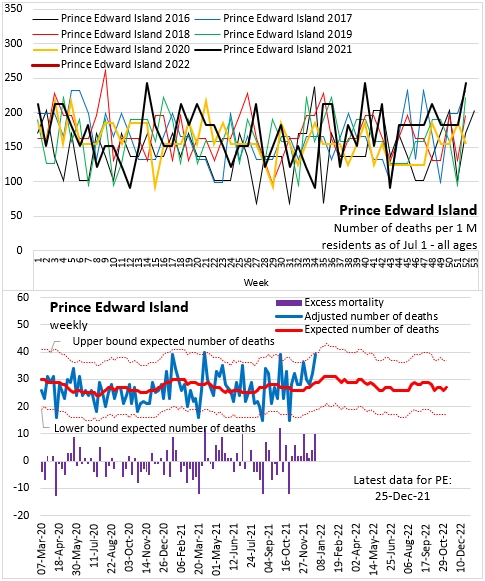
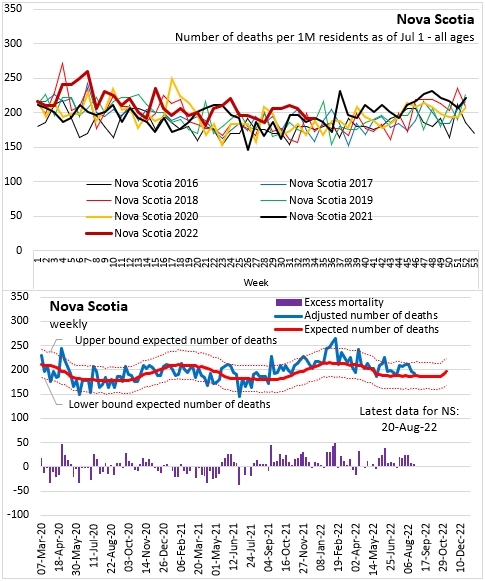
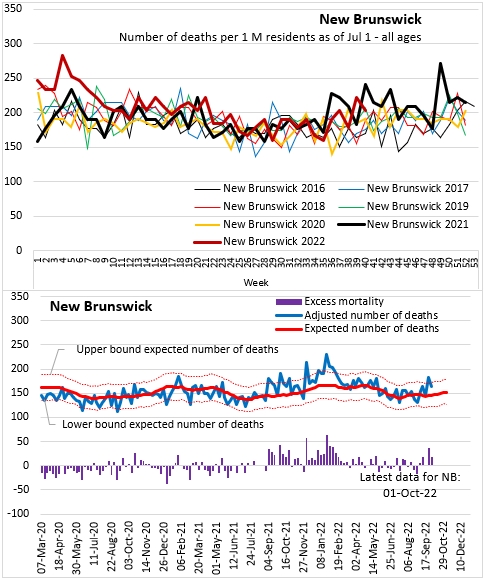
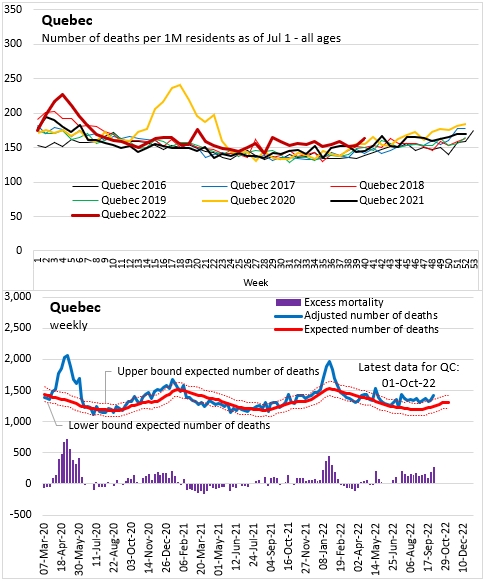
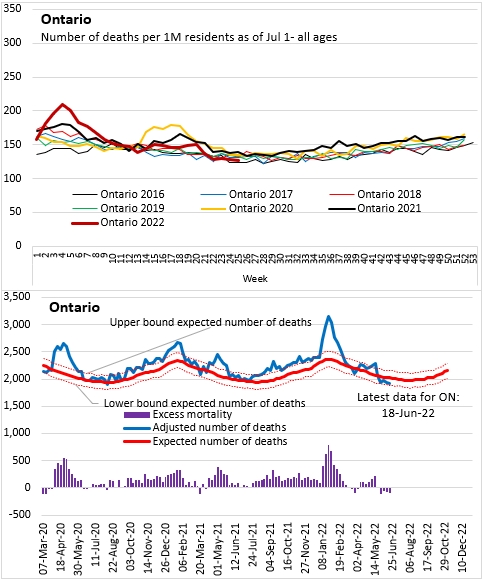

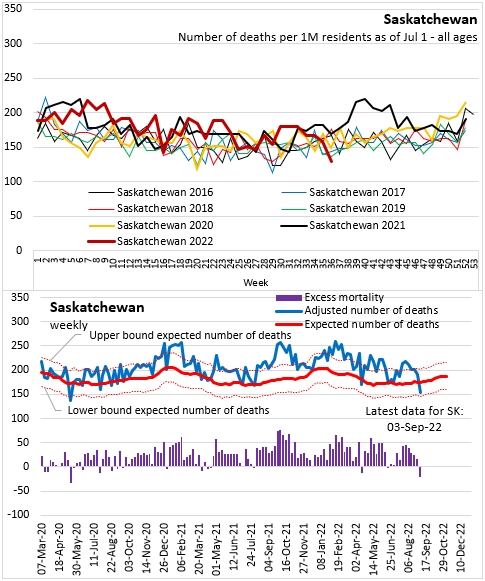
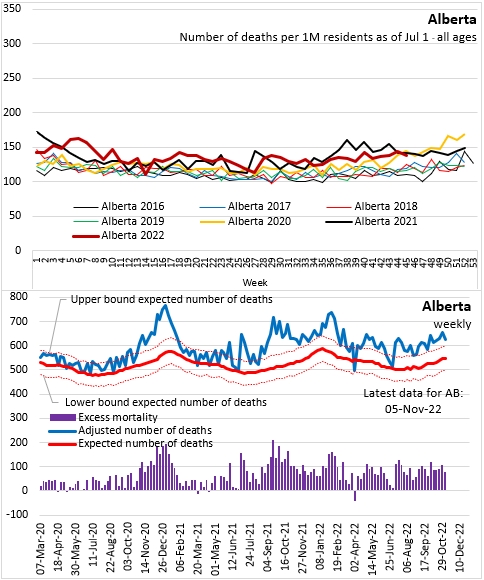
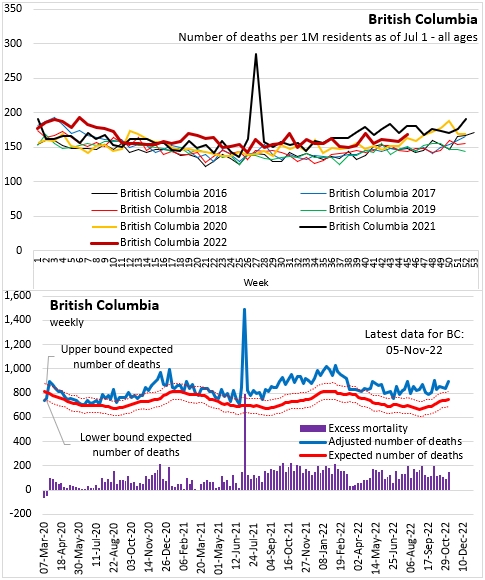
Source: Statistics Canada. Table 13-10-0768-01 Weekly death counts, by age group and sex; Table 13-10-0784-01 Adjusted number of deaths, expected number of deaths and estimates of excess mortality, by week
<--- Return to Archive